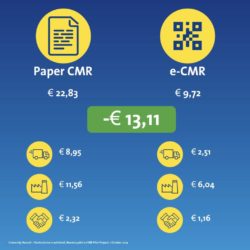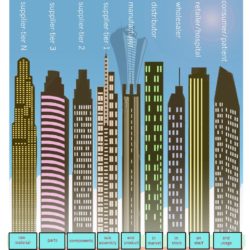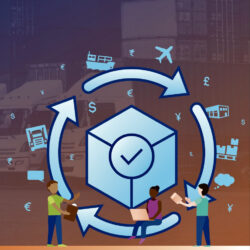Research: digital freight document enables substantial cost-savings

Digital freight documents offer companies numerous benefits. Besides gaining improved supply chain visibility, users can also save up to €13 per document on administrative costs, according to recent research by Hasselt University.
Digital freight documents offer several advantages over paper-based versions: improved supply chain visibility, communication with other chain partners and process efficiency, to name but a few. Nevertheless, some companies still have doubts about the use and integration of the necessary software. It always takes time and money to integrate new software and adapt processes, of course, which means that cost-savings are no immediate – but there are still clear benefits.
The study by Belgium’s Hasselt University, which was conducted as part of the e-CMR pilot in the Benelux, demonstrates that the digital freight document can enable companies to achieve significant cost-savings. The main savings come from reducing the administrative costs resulting from the laborious processes of creating, submitting, transmitting, signing and archiving the paper-based version. Analysis of the time involved in such processes revealed that each digital freight document is €13 cheaper than its paper-based equivalent. These findings confirm earlier research by Finland’s Lappeenranta University (2017) and SIRA Consulting (2007).
Time is money
The e-CMR pilot in the Benelux started two years ago. Researchers from Hasselt University conducted a survey among 72 companies in Belgium to compare their experiences of the e-CMR and paper-based freight documents. The main focus of the study was to establish how much time is involved in preparing, submitting, transmitting, signing and archiving a freight document. The results show that it takes a shipper almost 11 minutes to create, transmit and submit a digital freight document. This is a saving of almost 10 minutes per document, not only because the e-CMR is signed faster but also and above all because the digital version can be archived much more quickly.
Expressing the amount of time spent on a freight document as costs illustrates just how much money companies can save. The time spent on a digital freight document costs an average of €9.72, whereas the paper-based version costs €22.83 (based on the statistical average salary in Belgium). Hence, it is possible to save a total of €13.11 on each freight document. For companies that are handling dozens of freight documents per day, this can soon mount up and switching to the e-CMR can even generate immediate cost-savings.
Doubts about software compatibility
More than 80% of the companies that have not yet digitalized their freight documents indicated that they lack information about the possibilities and benefits. This is expected to change as communication about the e-CMR intensifies. Close to 60% of the respondents also expressed their doubts about the compatibility of the new software system with their existing systems. People often assume that digitalization only makes sense when all supply chain partners make the switch because the systems are not compatible – and that results in the project being put on hold.
The TransFollow software offers a solution in this case. It can be integrated with existing software systems, but the TransFollow app and portal can also be used by supply chain partners that have not integrated the software. After creating an account, they can view and manage the digital freight documents and download PDF versions for their own files. If a driver is checked during a journey, the digital freight document can simply be presented in the authority’s required language or transmitted as a QR code. Additionally, if a partner is unwilling or unable to create an account, the digital freight document can be emailed to them after signing.









